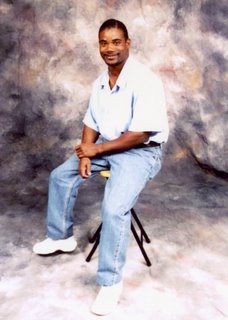WHEN A GRAINY VIDEO IS BETTER THAN A WITNESS
By
Dortell Williams
(Approx. 650 words – non-fiction)
By
Dortell Williams
(Approx. 650 words – non-fiction)
The case had all the elements of a whodunit – but CSI style. A 1998 robbery murder. Forensic evidence was strewn all about the Los Angeles area mini-mart storeroom.
The broken glass, displaced boxes, and an upended table told only part of the story. A scuffle - a violent scuffle – had occurred. The treasure of micro-evidence would surely tell the rest of the story; pools of blood, fingerprints (forty-eight, as a matter of fact), and even hair samples were found at the scene. It was a “eureka” moment for the crime scene investigators – or so they thought.
In the end it was all fruitless.
Their was a grainy video of one of the assailants, but he was out of range; capturing only his lower extremities.
Detectives were forced to rely on the age-old traditional methods of homicide investigation: interviews, witness surveys, calls for anonymous tips and clues apart from forensic science.
The surviving victim, a female store clerk, described the robbers as two black men. The killer was distinctive and indelible. A big man weighing about two hundred and eight pounds and about six-two with striking grey eyes.
The detectives were determined. They rounded up dozens of suspects and interviewed dozens more “persons of interest.” Anonymous tips clogged the phone lines, yet, when all was said and done, they had nothing.
The case lay dormant for close to five years until a tip led to Moses Lee Turner. The thirty-eight-year-old father of ten (he started when he was eleven-years-old) adamantly denies any involvement. “They railroaded me, man…my attorney dumped me,” Turner says energetically.
Turner, darkly toned with wired-rimmed glasses; a martial artist and talented oil painter was found guilty by a racially diverse jury of twelve on each and every count. He is now two years and some months into a sentence of life without the possibility of parole.
Case closed? Not quite.
A quick review of Turner’s trial transcripts reveals that there seems to be more evidence of his innocence than his guilt.
According to court records of the trial, when asked if Turner was one of the two assailants the state’s main witness – the female store clerk – said emphatically, “No.”
Turner, who is barely five-six in stature, with dark brown eyes, sat relieved that the witness was consistent in her testimony. Of the forty-eight fingerprints collected at the scene, not one was a match to Turner. Likewise with the hair samples found. Oddly, the state refused to present any blood evidence – for or against Turner. It was lost they claimed. Still, it had been established that the blood found was from more than one source.
So what was it that gave the state’s case such weight with the jury? Such weight that they were willing to overlook the apparent incompetence that caused the loss of crucial evidence? For one, they didn’t know and second: The grainy video.
The poor quality of the video was bolstered by the testimony of Turner’s parole agent. An agent recently assigned to supervise him following his release from custody stemming from an arrest for possession of drugs (for personal use) and a gun. “That stuff actually belonged to my brother, but I took the case because he was facing a strike,” Turner volunteered.
His parole officer testified that he believed the stride and nature of the person walking in the grainy video matched that of Turner’s. And such was the anemic evidence that outweighed all of the other evidence. Evidence that effectively ruled him out – or at least should have.
It is exactly this type of malpractice that led The Blue Ribbon Rampart Review Panel of July 2006 to conclude that the Los Angeles criminal justice system lacks sufficient checks to prevent such egregious cases of injustice.
Turner is vigorously pursuing the appeal of his case, but when the courts exercise such blatant endorsements of injustice there’s little room for hope. Meanwhile, a division of The Innocence Project has taken an interest in his case and that has helped his faith. Yet he reserves an obstinate doubt in a criminal justice system that has for too long trampled over the rights of the indigent. There’s no question that if Turner had the financial means he wouldn’t be here.
For now, his biggest hope and most fervent source of strength; in his own words, is the prospect of being able “to see and finish raising my kids.”
Sources:
(AP) “County Police More Likely to Search Black, Hispanic Drivers,” Antelope Valley Press, July 13, 2006: A6 (Re: The Blue Ribbon Rampart Review Panel)
The People of the State of California v. Moses Lee Turner, Superior Court No. BA179907
Reporter’s Transcripts: Volumes 11 through 14, pp. 2401-3000 (Witness said Turner was not one of the assailants – p. 2473; No fingerprints – pp. 2793-2798; No forensic evidence matched Turner – pp. 2805-2807.
November 2006


3 Comments:
It is very interesting for me to read that article. Thanx for it. I like such topics and anything connected to them. I definitely want to read a bit more on that blog soon.
Cool story you got here. It would be great to read more concerning this matter.
BTW look at the design I've made myself Overnight escorts
Do you still correlate with Moses Turner? I am almost certain that this is the Uncle Moses that I have been searching for. Any information will be greatly appreciated.
Post a Comment
<< Home